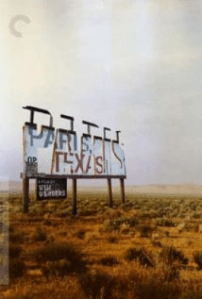 Greetings again from the darkness. For most folks, life is a constant battle each and every day as we attempt to avoid the chaos stemming from work, health, friends, family, and overall stress. Sometimes we kid ourselves into thinking we have things under control, but inevitably, a sharp reminder pops up letting us know “control” is a mirage, and life is meant to be more rollercoaster than smooth sailing. Longtime (and always interesting) writer-director Wim Wenders and co-writer Takuma Takasaki have teamed up for this Oscar nominated film (Best International Feature) depicting one man’s attempt to control his life.
Greetings again from the darkness. For most folks, life is a constant battle each and every day as we attempt to avoid the chaos stemming from work, health, friends, family, and overall stress. Sometimes we kid ourselves into thinking we have things under control, but inevitably, a sharp reminder pops up letting us know “control” is a mirage, and life is meant to be more rollercoaster than smooth sailing. Longtime (and always interesting) writer-director Wim Wenders and co-writer Takuma Takasaki have teamed up for this Oscar nominated film (Best International Feature) depicting one man’s attempt to control his life.
Veteran actor Koji Yakusho stars as Hirayama. He’s the proverbial creature of habit, which the first 45 minutes of the movie prove. We see him rise from sleep in his simple, well-organized apartment. He spritzes his plants, smiles at the sky, and drives his van to his job as a sanitation worker in the city. The logo on his jumpsuit is The Tokyo Toilet and we follow him on his rounds as he scrubs the public toilets … each structure more artistic than the last. When he pauses for rest, Hirayama takes photos of trees with his camera. Taking pride in his work, this man of few words, has found serenity in his routine which includes nighttime reading (Faulkner, Koda, and even Patricia Highsmith). While driving his van, Hirayama utilizes his carefully selected collection of cassette tapes to provide the classic rock he loves (The Kinks, Lou Reed, etc).
Generational and personality differences are apparent when contrasting Hirayama and his young assistant Takashi (Tokio Emoto). As the elder works towards a job well done, Takashi plays on his phone, flirts with a girl, a strives only for a job done so that he can move on to the more enjoyable evenings. The two are not friends, but the elder does seem to understand the desires and anxiousness of the younger man. At night, Hirayama does his reading and then dreams … visions we see in black and white, many which seem to relate to nature’s beauty of the trees he photographs each day.
When one is so meticulous about the steps for each day, it takes little to shake his world. It could be the actions of his co-worker, a kiss on the cheek, a recurring homeless man in the park, and certainly, the arrival of his teenage niece after she runs away from home. When his sister arrives to take the girl back, we sense the strain in their relationship – something from the past that still lingers. It’s these minor blips, along with an odd game of ‘shadow tag’ that shake Hirayama’s routine and open him (back) up to life’s ups and downs. At first, we believe Wenders is showing us the difference between alone and lonely, as this man seems quite content. But the final shot is of Hirayama’s awakening and acceptance, or at least acknowledgment, of the emotions to be found in uncertainty. It’s a wonderful film, beautifully directed, and expertly acted. “Perfect Day” by Lou Reed and “Feeling Good” by Nina Simone are two of the standout songs featured here.
In theaters beginning February 7, 2024



 Posted by David Ferguson
Posted by David Ferguson 



